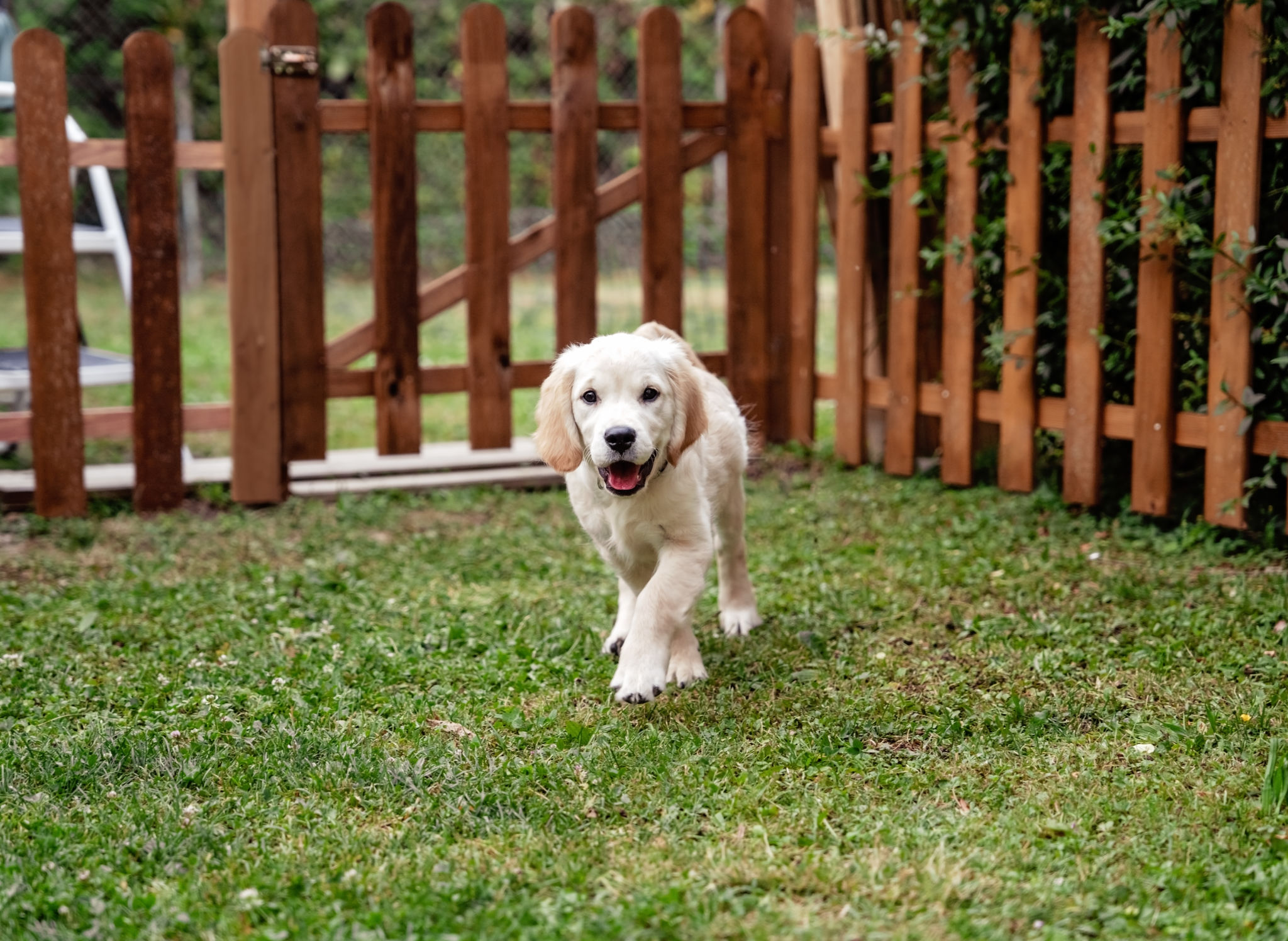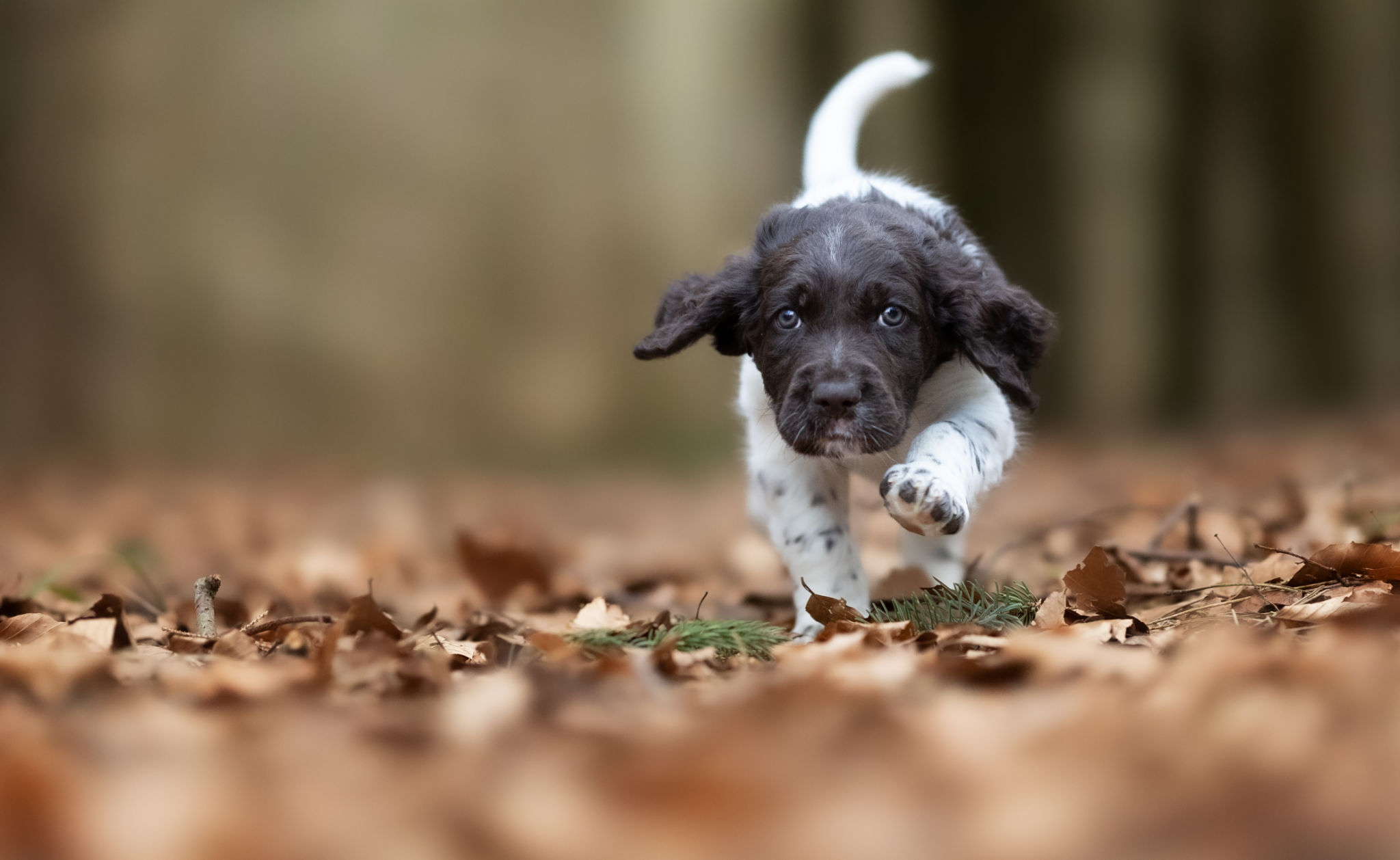Essential Puppy Training Tips: Set Your Pup Up for Success
Al
Helping Your Pup Thrive from Day One
Welcoming a new puppy is exciting but comes with its challenges. Proper training during this critical stage sets the foundation for a lifetime of good behavior and a strong bond between you and your furry friend. Whether you're a first-time pet parent or looking for a refresher, this dog training guide will equip you with actionable tips for raising a happy and well-adjusted pup.

1. Start with the Basics: Potty Training
Potty training is one of the first and most essential steps in raising a puppy.
Key Tips:
- Timing: Puppies can hold their bladder for one hour per month of age. For example, an 8-week-old puppy can likely hold it for no more than 2 hours. Take them out frequently, especially after eating, drinking, sleeping, or playing.
- Consistency: Use the same potty spot to help them associate the area with eliminating.
- Positive Reinforcement: Praise and reward your puppy immediately after they go outside to reinforce good habits.
- Interrupting Mistakes: If you catch your puppy in the act of eliminating inside, quickly interrupt the behavior by scooping him/her up and rushing him/her outside. Do not yell at your puppy during this process. If you do, your puppy may learn not to eliminate in front of you but will start hiding and eliminating in secret places out of fear.
Pro Tip: If your puppy does not eliminate put him/her back in the crate or tether her to you for 15-30 minutes. Repeat steps1-3 until she eliminates outside. Do not allow her to roam freely until she successfully eliminates outside.
2. Make the Crate Your Puppy’s Best Friend
Crate training provides your puppy with a safe and comforting space while helping prevent accidents and destructive behavior.
How to Introduce the Crate:
- Keep the crate door open and let your puppy explore it freely.
- Offer treats and toys inside to create positive associations.
- Gradually close the door for short periods while they are relaxed.
Pro Tip: Use a stuffed KONG or similar toy to keep your puppy entertained and happy in the crate.
3. Positive Reinforcement: Your Key to Success
Training is most effective when you reward desired behaviors. Positive reinforcement works by rewarding behavior that we like and modifying behavior we don't like. Instead of thinking about how to get your dog to stop doing something, think about what you want your dog to do instead.
Best Practices for Positive Reinforcement:
- Use small, soft treats or toys as rewards.
- Give rewards immediately after the desired behavior.
- Be consistent and adjust rewards based on what motivates your puppy.
- Consider modifying the environment so its easier for the puppy to do the desired behavior.
Pro Tip: Focus on teaching what you want your puppy to do rather than discouraging undesirable behaviors. For example, reward calm sitting instead of jumping.
4. Leash Training: Building Confidence on Walks
Leash training is a crucial part of teaching your dog to navigate the world safely.
Tips for Successful Leash Training:
- Start by letting your puppy wear the harness indoors to get used to the feel.
- Use positive reinforcement to reward calm behavior while on the leash.
- Gradually introduce short walks, praising your puppy when they walk calmly by your side.
Long Line Walking for Exploration: One of the best ways to exercise a young puppy is through long-line walks. A long leash (20-30 feet) attached to a harness gives your puppy the freedom to explore their environment while still under your control. These walks help your puppy engage their natural instincts to explore, sniff, and play.

5. Exercise and Playtime: Burn Off That Puppy Energy
A well-exercised puppy is less likely to develop behavioral issues like chewing or excessive barking.
Ideas for Physical and Mental Stimulation:
- Take daily walks, allowing them to explore different environments.
- Use puzzle toys or interactive games to challenge their minds.
- Schedule playdates with other well-mannered dogs for socialization.
Important: Avoid high-impact activities like repetitive jumping until your puppy’s growth plates are fully developed.
6. Communication and Consistency
Clear communication helps your puppy understand your expectations.
Key Tips:
- Use consistent verbal cues for commands (e.g., always use "sit," not "sit down" interchangeably).
- Pair commands with hand signals for better understanding.
- Keep commands short and direct.
Remember, dogs learn through repetition and association, so patience and persistence are key!
7. Rest is Just as Important as Play
Teaching your puppy to settle and relax is critical for their overall well-being.
Rest Training Tips:
- After play or training sessions, encourage calm behavior by tethering your puppy with a chew toy or letting them rest in their crate.
- Gradually introduce resting in different environments to help them stay calm anywhere.
- Ensure they have met their exercise and mental stimulation needs before expecting them to settle.
8. Partnering with a Dog Trainer
Sometimes, you may need additional help to address specific challenges or fine-tune your puppy’s training. A professional dog trainer can provide personalized guidance and support.
Benefits of Hiring a Dog Trainer:
- Expert advice tailored to your puppy’s needs.
- Structured training programs for obedience and behavior management.
- Assistance with advanced skills like leash training or addressing behavioral concerns.
If you’re struggling with any aspect of training, don’t hesitate to seek help from a qualified dog training professional.

My Personal Journey: Training My Service Dog Luciano
Training a dog is not just about teaching commands; it's about building a bond that can transform your life. My service dog, Luciano, has been my steadfast companion through some of life’s toughest challenges. When I began training him as a psychiatric service dog, I was navigating a period of immense personal loss and stress.
Luciano’s journey inspires everything I do at Paws on Planes Inc. Whether you're raising a puppy for companionship or preparing a service dog for a vital role, I know firsthand the profound impact training can have on your relationship with your dog—and your overall well-being.
Final Thoughts
Training your puppy is a journey filled with small wins and big milestones. With consistency, patience, and the right techniques, you’ll raise a well-behaved and happy companion. Remember, every challenge is an opportunity to strengthen the bond with your furry friend.
If you have questions or need further support, reach out to Paws on Planes Inc. for personalized guidance. Let’s make your puppy training adventure a rewarding experience!
Have Questions? As you work through the exciting journey of training your new puppy, always feel free to reach out with any questions or concerns. Whether you need guidance, have specific challenges, or simply want some advice, I’m here to help!
